INTRODUCTION
Petri Nets – instrument of research of the systems. Presently the networks of Petri are used mainly in a design. In many areas of researches the phenomenon is studied not directly, but indirectly, through a model. A model is presentation, as a rule, in mathematical terms that is considered most characteristic in the studied object or system. Manipulating the model of the system, it is possible to get new knowledges about it, avoiding dangers, costliness or inconveniences of analysis of the most real system. Usually models have mathematical basis.
Development of theory of networks of Petri was conducted on two directions. The formal theory of networks of Petri is engaged in development of the fixed assets, methods and concepts, necessary for application of networks Petri. The applied theory of networks of Petri is linked mainly with the use of networks of Petri to the design of the systems, to their analysis and resultant it deep penetration in the designed systems.
A design in the networks of Petri is carried out at event level. Determined, what actions take a place in the system, what the state preceded these actions and what states will be accepted by the system after implementation of action. Implementations of event model in the networks of Petri are described by the conduct of the system. The analysis of results of implementation can say about that, in what states was or was not system, whatever states in principle are not attainable. However, such analysis does not give numerical descriptions, determining the state of the system. Development of theory of networks of Petri resulted in appearance, so-called, “coloured” networks of Petri. The concept of coloured in them is closely related to the concepts of variables, types of data, terms and other constructions, more close to the programming languages. In spite of vague similarities between the coloured networks of Petri and programs, they were not yet used as a programming language.
Not looking on the dignities of networks of Petri described higher, inconveniences of application of networks Petri as a programming language are concluded in the process of their implementation in the computer system. In networks Petri is not present strictly concepts of process which can it would be be executed on the indicated processor. There is not also a synonymous sequence of execution of network Petri, because an initial theory presents us a language for description of parallel processes.
The best possibilities of description of the parallel systems are possessed by the networks of Petri. They are no less powerful, what PVM, MPI, SDL et al, but to execute them on processors it is necessary to make out of description of parallel distributed.
A network of the first family is the coloured network of Petri, described in language of orders.
A network of the second family is a network, presented as hierarchical composition of objects.
Theory of networks of Petri
A theory of networks of Petri is well the known and popular formalism, intended for work with the parallel and asynchronous systems. Founded at the beginning of 60th the German mathematician of К.А.Петри, presently it contains plenty of models, methods and facilities of analysis, having a vast amount of appendixes practically in all of industries of the computing engineering and even out of it.
Simple networks of Petri
Network of Petri from three elements: great number of places

, great number of transitions

and relation of incident
 Determination: Simple network of Petri
Stand the network of Petri is name a set
Determination: Simple network of Petri
Stand the network of Petri is name a set  , where
, where
1.  - great number places;
- great number places;
2.  - great number transitions such, that
- great number transitions such, that  .
.
3.  - relation to the incident such, that
- relation to the incident such, that
(а)  ;
;
(б) 
Terms in a point 3 it is talked that for every transition  there is the unique element
there is the unique element  , questioner entrance mul'timnozhestvo of places for him
, questioner entrance mul'timnozhestvo of places for him  and output mul'timnozhestvo
and output mul'timnozhestvo  . We will give determination entrance and output mul'timnozhestvu.
. We will give determination entrance and output mul'timnozhestvu.
Determination: Input and output mul'timnozhestva of places and transitions
Let a network is set  .
.
1. If for some transitionа  have
have  , will designate
, will designate  ;
;
2.  .
.
We will talk that  - input, а
- input, а  - output transition places
- output transition places  . Thus, in obedience to determination, justly
. Thus, in obedience to determination, justly  . We will talk further, that place
. We will talk further, that place  incident to the transition
incident to the transition  если
если  or
or  .
.
We will extend functions  and
and
 on mul'timnozhestva of transitions. Let
on mul'timnozhestva of transitions. Let
 there is mul'timnozhestvo of transitions such, that
there is mul'timnozhestvo of transitions such, that
 . Then will put
. Then will put

 .
.
The networks of Petri have a comfortable graphic form of presentation as a count in which places are represented mugs, and transitions by rectangles. Places and transitions, thus place
 unites with a transition
unites with a transition
 if
if
 and
and
 connect to
connect to
 if
if
 for some numbers
for some numbers
 . Here number
. Here number
 named multipleness of arc, which is graphicly represented next to an arc. Arcs, having single multipleness, will be designated without ascription of unit.
named multipleness of arc, which is graphicly represented next to an arc. Arcs, having single multipleness, will be designated without ascription of unit.
Example. Example of network
As a simple example there is a rasssmotrim network  , where
, where
1.  ;
;
2.  ;
;
3. 
In a graphic form a network is presented on Рис.1. Four places and three transitions have a network. Relation
 sets the arcs of network. So,
for example, element
sets the arcs of network. So,
for example, element  sets four arcs: from
sets four arcs: from
 in
in
 and from
and from
 in
in
 with kratnostyami 2, from
with kratnostyami 2, from
 in
in
 and from
and from
 in
in
 with single kratnostyami. For a transition
with single kratnostyami. For a transition
 justly
justly
 and
and
 . For place
. For place
 it is possible to calculate
it is possible to calculate
 and
and
 .
.
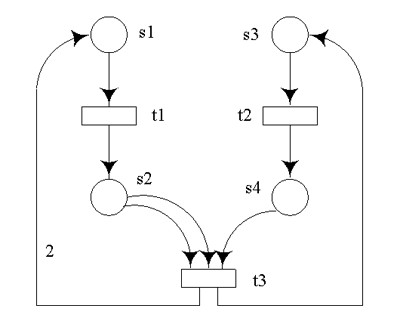
Fig. 1: Example of count of network of Petri
On itself the concept of network has static nature. For the task of dynamic descriptions a concept is utillized marking network  , function
, function  , comparing every place an integer. Graphicly marking is represented as points, urgent marks (tokens, and disposed in mugs, proper the places of network. Absence well-aimed in some place talks about a zero marking of this place.
, comparing every place an integer. Graphicly marking is represented as points, urgent marks (tokens, and disposed in mugs, proper the places of network. Absence well-aimed in some place talks about a zero marking of this place.
Determination: Marked network of Petri
The marked network of Petri is name a set  , where
, where
1.  - network;
- network;
2.  - first markup
- first markup
Example. Example of marked network.
On Fig.2 the example of the marked network is resulted. There is a place in the initial marking
 has two well-aimed (tokena), place
has two well-aimed (tokena), place
 - first mark, and place
- first mark, and place  ,
,  - no marks, because.
- no marks, because. 
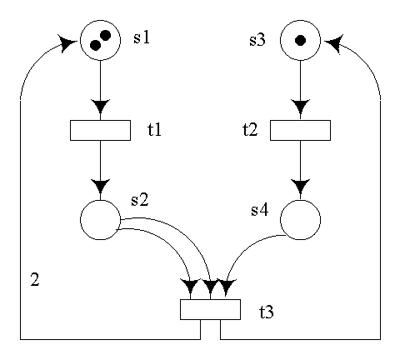
Fig. 2: Example of marked Petri Network
The networks of Petri were developed and utillized for the design of the parallel and asynchronous systems. At a design in the networks of Petri of place symbolize some state of the system, and a transition is symbolized by some actions, what be going on in the system. The system, being in some state, can generate certain actions, and vice versa, implementation of some action translates the system from one state in other.
Current status of the system is determined by marking of network Petri, I.e. location well-aimed (tokenov) in the places of network. Implementation of action is in the system, in networks Petri is determined as working transitions. Working of transitions generates the new marking, I.e. generates the new placing well-aimed (tokenov) in a network. We will define functioning of the marked networks, based on working of separate transitions.
Determination: Working rule
transitions
Let  marked network.
marked network.
1. Transition  considered excited till marking
considered excited till marking
 , if
, if  ;
;
2. Transition  , excited at marking
, excited at marking
 , может сработать,
resulting in the new marking
, может сработать,
resulting in the new marking  , which is calculated by rule:
, which is calculated by rule:  . Working of transition is designated
like
. Working of transition is designated
like  .
.
By other words, a transition is considered excited at some marking, if in every his entrance place there is an amount well-aimed no less to multipleness of the proper arcs. The excited transition can work, thus at working from every his entrance place withdrawn, and to every entrance a several is added well-aimed, equal to multipleness of the proper arcs. If a few transitions are simultaneously excited, any of them can work or any their combination. For example, let in a network on a picture 2 transitions will work  and
and  . We will get a network presented on a picture 3.
. We will get a network presented on a picture 3.
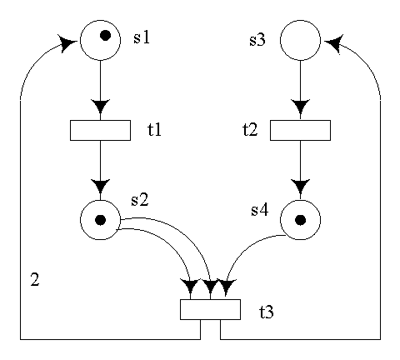
Fig. 3: New network with marking  .
.
Kompozitsional'nyy approach to the construction of networks Petri supposes possibility of construction of more difficult networks from less difficult constituents. The points of access, which allow to unite simple networks by synchronization of events and states, are entered for this purpose (transitions and places).
Determination: Determination T - access point.
Let we have netwotk  and some letters
and some letters
 . T-access point we will call
. T-access point we will call
 , where
, where
1.  - name (identificator)
t-acces point;
- name (identificator)
t-acces point;
2.  - some letters;
- some letters;
3.  - pometochnaya function, where
- pometochnaya function, where  . Record
. Record  designates the great number of all of eventual and unempty mul'timnozhestv, certain on a great number
designates the great number of all of eventual and unempty mul'timnozhestv, certain on a great number  .
.
Determination: Determination S - access point
Let we have network  . Than s-access point
call N count
. Than s-access point
call N count  , где
, где
1.  - name (identificator)
s-access point;
- name (identificator)
s-access point;
2.  - a great number is such, that
- a great number is such, that  .
.
The entered concepts of points of access give possibility to enter two basic operations above the networks of Petri for the construction of kompozitsional'nykh networks:
1. Operation of confluence of transitions - allows to generate and describe synchronization of parallel processes (tmerge);
2. Operation of confluence of places - allows to apply the operations of successive composition to the networks, choice, iteratsii et al (smerge).
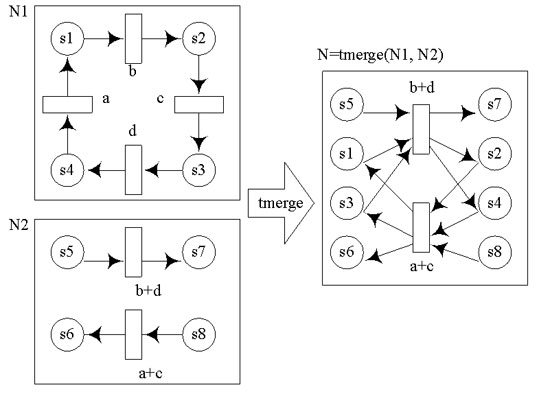
Fig. 4: Example of operation of confluence of transitions
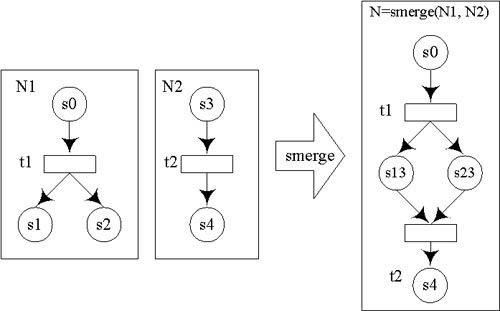
Fig. 5: Example of operation of confluence of places
The resulted operations have the following sense:
At confluence of places - the set of the states is determined in networks which are identified, as the state of network, certain the name of s, is points of access. Confluence of different networks is made so, that if the described state is attained in one network, in other network this state also turns out attained;
At confluence of transitions –
the alphabet of events, visible from t - point of access is determined. Every transition in a network is marked either an invisible event or combination of events from the alphabet of point of access. Confluence on transitions is made so, that if there is some combination of events at working of one network , the same combination of events takes a place in the second network.
Coloured networks of Petri
Expansion of simple networks in coloured consists in adding information to the elements of network, based on which, at certain terms, it is possible to transform the coloured networks in simple ([8]).
1. Tokeny in place of simple denotation of content of place transformed in an object which can contain one or more than parameters, each of which can accept the discrete set of values. In accordance with this tokeny differentiate on the types of parameters (variables). To distinguish tokeny of different types they can be painted in different colors (therefore networks name coloured)

2. To the places information is added about the types of tokenov, which can is in this place.

3. To the arcs, to outgoing from places, information is added about the types of tokenov, which can participate in excitation of transitions, incident these arcs.

4. To the transitions information can be added with the predicate of excitation of transition, depending on variables, contained in tokenakh.
( and
and  )
)
5. To the arcs, to outgoing from transitions, information is added about the types of tokenov, outgoing from a transition and about transformation of variables.

6. To the initial marking of network information is added about the value of variables, contained in tokenakh.
In graphic presentation information which it can simply finish building from concomitant information, it is possible to skip. We will make an example of the coloured network of Petri (Fig. 6)
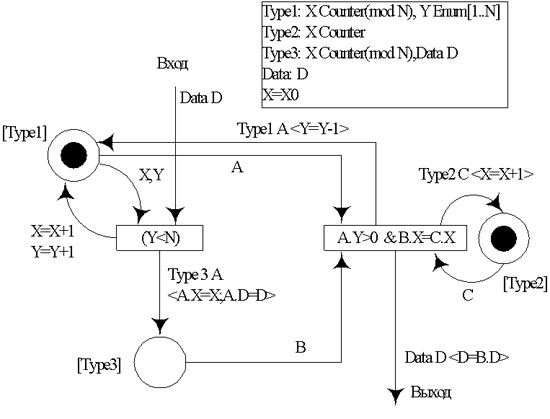
Fig. 6: Example of the coloured network of Petri (turn)
It seems on the face of it, that presentation of the coloured network looks so, that each of arcs, going out from a transition, contains some action. In actual fact, at transformation of the coloured network to simple, all of actions pass to the network structure. It is arrived at breaking up of places and passing to the amount equal to dekartovu work of great number of all of values of all of types of data, proper these places and transitions. Thus all of variables in a network turn out already set and arcs, connecting places and transitions, appear in place of arcs of the coloured network, in obedience to the “coloured” descriptions.
In description of the coloured networks there is not an of principle limit on the utillized variables. Nevertheless, transformation of the coloured network to simple possibly only then, when all of variables have a discrete spectrum of values.
Points of access are in the coloured network.
S - access point. As be obvious from determination of s are points of access, it is set in a number of marking, which are considered equivalent in sense of offensive of the states, certain these marking, in synchronized on s - to the point of access networks. At the task of s are points of access in the coloured network, marking can contain places in which can act tokeny of different types. Such places at transformation to the simple network are broken up on the great number of places the amount of which is equal to power of great number of values of tokenov possible in this place. In obedience to sense of operation we are under an obligation will be in the synchronized network to parcel up these places, to satisfy the great number of values of tokenov in the second network. It turns out that during synchronization of places of identical type (with the identical possible types of tokenov) the value of parameters of one network in any way does not influence on the value of parameters other, that sense of operation
Determination:
Let set: coloured network N и С –
a great number of types of tokenov is in this network. Then the s-point of access of network of N is name a set  , where
, where
1.  - name (identificator)
s-access point;
- name (identificator)
s-access point;
2.  - some letters;
- some letters;
3.  - a great number is such, that
- a great number is such, that  .
.
4.  , где
, где  , thus if
, thus if
 .
.  - pometochnaya function of places, putting in accordance every type of tokena in a place unique identifier from an alphabet.
- pometochnaya function of places, putting in accordance every type of tokena in a place unique identifier from an alphabet.
В of operation of confluence of the coloured networks on places, it is necessary to clean breaking up of places on tokenam with the qualified names. Actually, it means the resize of operation of confluence on one s - to the point of access in simple networks in the operation of confluence of series of points of access of the coloured networks, parameters numbered values with the names. It is possible to show that the operation changed thus does not change the svoyst.
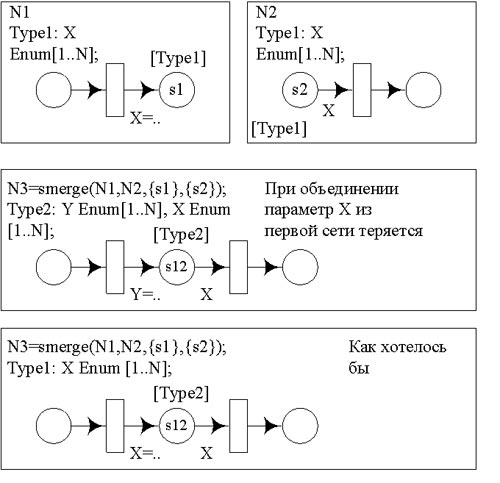
Fig. 7: Example of confluence of the coloured networks Petri on S - to the access point
T-access point. When synchronizations
on t - information is utillized the point of access about the mark of transitions, participating in synchronization. At transformation of the coloured networks to simple, transitions fission on an amount, equal to power of great number of values of accepted all of tokenami, entering transition. In this connection there is possibility of parametrizatsii of mark transition expressions, containing variables entering transition.
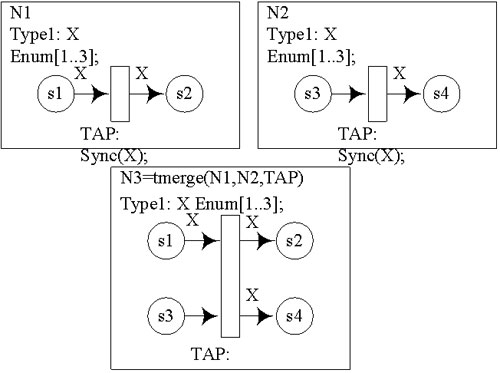
Рис. 8: Example of confluence of the coloured networks on T - to the point of доступа
На the example resulted below evidently, as a parametrizovannyy transition, transformed in simple networks.
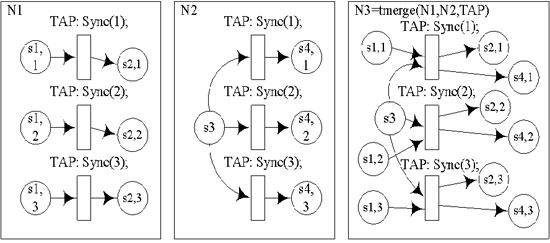
Рис. 9: T is Confluence of simple networks from a picture 8.
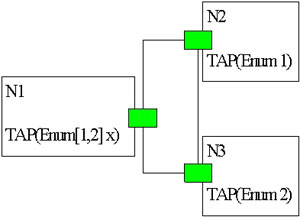
Рис. 10: Presentation of kompozitsional'nykh networks Petri at the level of co-operation of networks.

